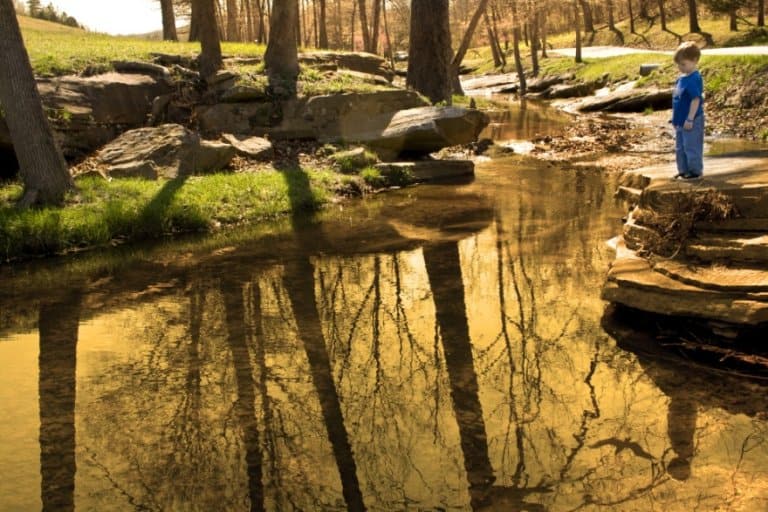Bridging the Gap Between Letter Sounds and Reading Words

There is always a huge celebration around our house the day one of our little ones learns to read. We had one of these celebrations just last week when my current four-year-old “made the connection.” He had been working hard on learning all of the letter sounds and blending and one day, it just clicked.
He formed the sounds for three different letters that he saw together, and when he realized he had just said an actual word, his face lit up.
“CAT!” he beamed. “It says cat.”
We went around sharing his success with every member of the family. It is always a memorable day when they learn to read.
Bridging the gap between sounds to words is one of those phases that takes patience and diligence. There are lots of activities that proceed that momentous occasion known as “reading.”
Learning to read comes in three major phases:
- Learning the letter sounds
- Blending the letter sounds together
- Realizing that the blended sounds make words
Phase One: Learning The Letter Sounds
Teaching letter sounds is the beginning of the process of learning to read. Once a child has learned all of the letter sounds, they can begin the next phase of learning to read. It is extremely important that they know all of the letter sounds well and can say them quickly before moving to the next phase.
A game I like to play with kids after they have mastered their sounds is the speedy flashcards game. I hold up the alphabet flash cards one at a time. Each card is held up for only a few seconds. The kids have to say the sound of each letter before the next card comes.
We practice the ones they have trouble with until they can do the whole stack quickly.
You never know how long this phase will last. Personally, I think that people rush it and cause delays in reading and undue frustration to the kid. Being patient and enjoying each phase is important.
Phase Two: Blending Sounds To Make Words
Once kids know all 26 letter sounds, they begin to recognize those letter sounds in everyday life. They will point out a B and say the ’buh’ sound everywhere they see it.
In this phase, the tricky part is blending two sounds together. Often, kids can say ‘cuh’ when they see a ‘C’ but putting that sound together with another sound to make them one sound is where the gap is. Don’t be surprised if a child goes on for weeks in this phase of single sounds; this is a natural and important part of the process.
Personally, I don’t teach blends or long vowels until after the child can read simple, short vowel words. Many people and curriculums differ in this approach, but I find that children like to read things that actually mean something and not just make sounds.
They are motivated when they hear a real word rather than abstract sounds like ‘ch’ or ‘th’. After they learn to read, they are eager to learn blends as they come to them in reading.
They love to make a concrete connection to the word that they read. They find it fascinating to hear the word ‘cat’ come out of their own mouth and even more fascinating that the thing they said brings to mind an image. This is magical to them. This is bridging the gap.

Phase Three: Realizing That Sounds Put Together Make Words
Although you may think that they will never make that connection between the single sounds and a word, all of a sudden, one day, it will happen. Just like Helen Keller, it will only take one word.
One day, it will just click. Give them letters to play with and arrange them in words for them. It’s okay if they still only sound each individual letter, the connection will come in time. Point out interesting words like names of family and friends and pets.
One sign that they are making real progress in bridging the gap is when they write scribbles on a paper and “read” it to you. If you hear, “It says…” you will know that they are learning and that your day of celebration is not far off.
When the day does come, enjoy and celebrate. After all of that hard work, both on your part and theirs, everyone deserves a party. Congratulations! You did it!







Leave a Reply